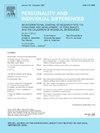Is ostracism deadly? The relationship between different types of ostracism and adolescent suicide
IF 2.6
2区 心理学
Q1 PSYCHOLOGY, SOCIAL
引用次数: 0
Abstract
Adolescent suicide is a significant global public health concern, and the widespread use of technology-mediated communication in daily life introduces new challenges for its prevention and intervention. This study employed both variable-centered and person-centered approaches to examine the associations between different forms of ostracism and adolescent suicide, based on a comprehensive ideation-to-action framework encompassing suicidal ideation, pre-suicide attempt, and suicide attempt. Structural equation modeling conducted on Chinese adolescents (N = 8981) revealed that only cyberpersonal space ostracism and real-world neglect were significantly associated with all three suicide-related outcomes. Building on these differential associations, a Latent Profile Analysis was conducted on a suicide-risk subsample (N = 2822), identifying three distinct risk profiles: high-risk (3.2 %), moderate-risk (17.0 %), and low-risk (79.8 %), with SI, PSA, and SA scores differing significantly across groups. Furthermore, cybersocial ostracism and offline neglect differentiated adolescents across risk profiles. Demographically, males, non-only children, and older adolescents were more likely to be categorized as low risk. These findings offer a new perspective on assessing and preventing adolescent suicide risk in the digital age, highlighting the critical role of ostracism in adolescent mental health.
被排斥是致命的吗?不同类型的排斥与青少年自杀的关系
青少年自杀是一个重大的全球公共卫生问题,在日常生活中广泛使用以技术为媒介的通信为预防和干预带来了新的挑战。本研究采用以变量为中心和以人为中心的方法,基于包括自杀意念、自杀前企图和自杀企图在内的综合从观念到行动的框架,研究了不同形式的排斥与青少年自杀之间的关系。对中国青少年(N = 8981)进行的结构方程模型显示,只有网络个人空间排斥和现实世界忽视与所有三种自杀相关结果显著相关。基于这些差异关联,对自杀风险子样本(N = 2822)进行了潜在特征分析,确定了三种不同的风险特征:高风险(3.2%)、中度风险(17.0%)和低风险(79.8%),SI、PSA和SA评分在组间差异显著。此外,网络社会排斥和线下忽视在不同风险状况下对青少年有差异。从人口统计学上看,男性、非独生子女和年龄较大的青少年更有可能被归类为低风险。这些发现为评估和预防数字时代青少年自杀风险提供了新的视角,突出了排斥在青少年心理健康中的关键作用。
本文章由计算机程序翻译,如有差异,请以英文原文为准。
求助全文
约1分钟内获得全文
求助全文
来源期刊

Personality and Individual Differences
PSYCHOLOGY, SOCIAL-
CiteScore
8.50
自引率
4.70%
发文量
577
审稿时长
41 days
期刊介绍:
Personality and Individual Differences is devoted to the publication of articles (experimental, theoretical, review) which aim to integrate as far as possible the major factors of personality with empirical paradigms from experimental, physiological, animal, clinical, educational, criminological or industrial psychology or to seek an explanation for the causes and major determinants of individual differences in concepts derived from these disciplines. The editors are concerned with both genetic and environmental causes, and they are particularly interested in possible interaction effects.
 求助内容:
求助内容: 应助结果提醒方式:
应助结果提醒方式:


